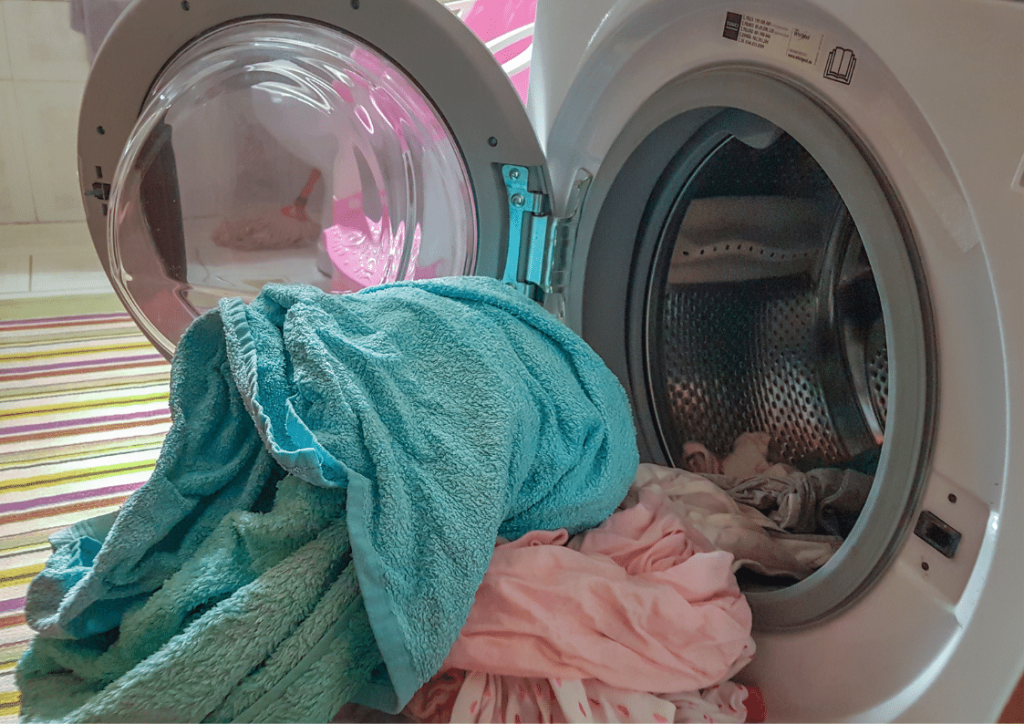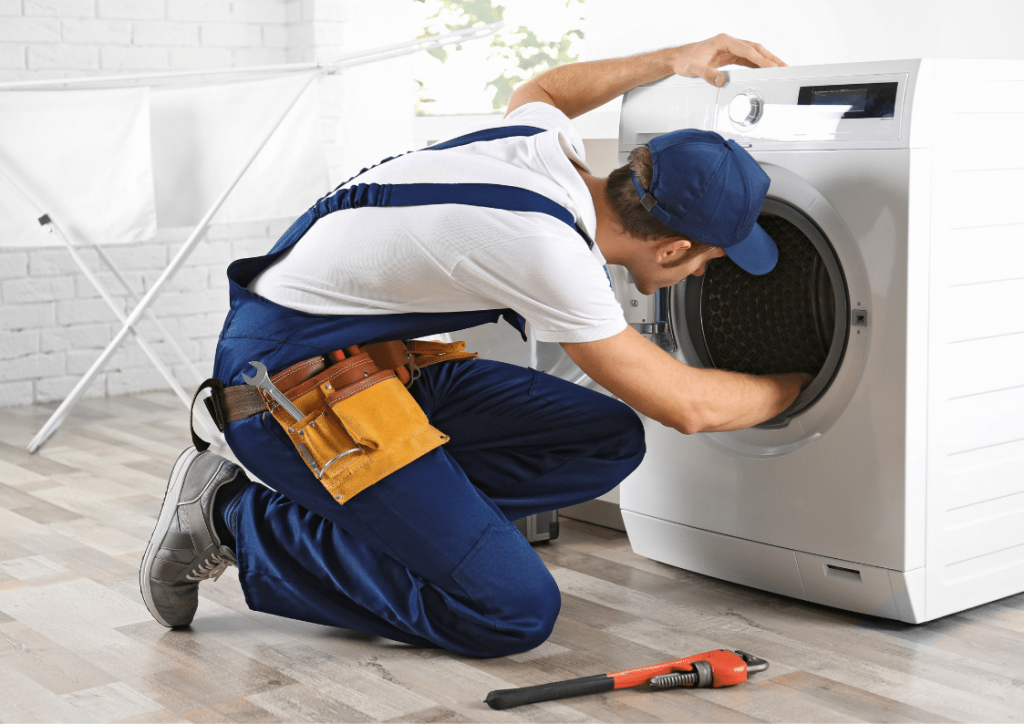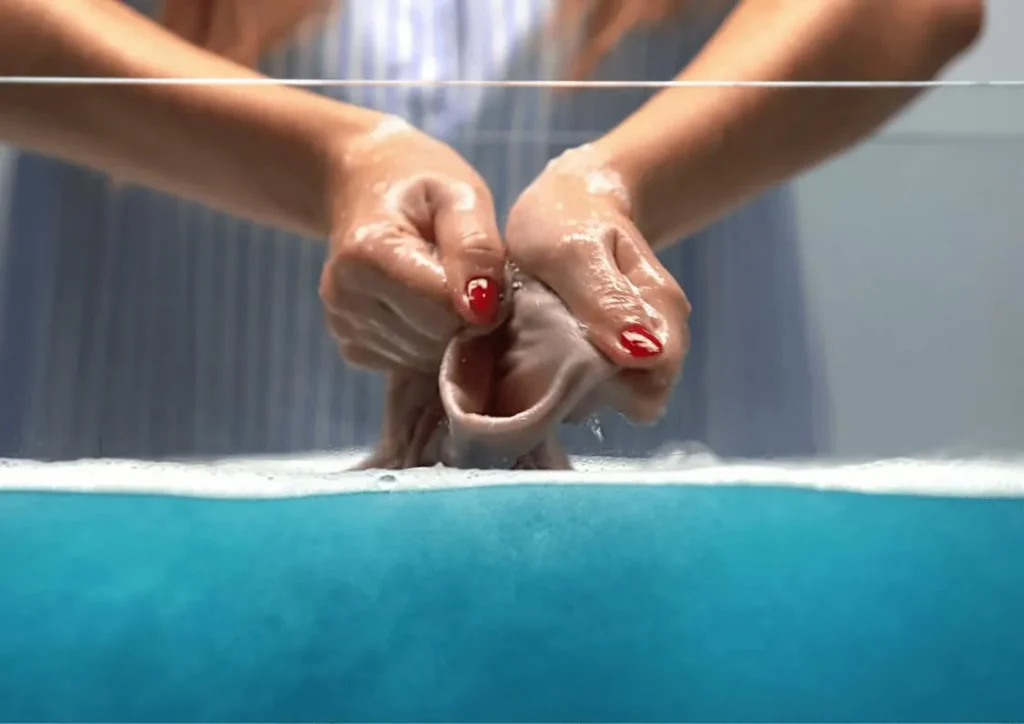If your washing machine plays up or a batch of clean clothes hung on a line outdoors get caught in a rainstorm, sometimes you’ll be left with a heavy load of garments that are dripping wet.
In this situation can your tumble dryer cope with large volumes of water without risking any damage to the machine.
Putting soaked clothes in a dryer will result in a build-up of lint, mold, and mildew inside the tumble dryer’s drum. Additionally, you can anticipate longer drying times and potentially overheating, which risks damaging .
Dryers are designed to dry damp garments. They are not intended to deal with the excess moisture produced when soaked clothes are thrown into the drum. Too much water inside the tumble dryer risks some serious issues.
Nobody likes to spend extra time thinking about household chores when things go wrong. So we have broken it down into simple points below.
- What happens if you put soggy clothes in the dryer?
- Will soaking wet clothes damage the dryer?
- What are some tips to avoid overly wet clothes?
After reading our guide, we are confident that you will no longer be tempted to put water-logged clothing straight into the tumble dryer. However, if you are not having problems with wet clothing but are looking for answers on condensation and water in your dryer, check out our guide with solutions here!

What will happen if I put soggy wet clothes in the dryer?
If you put water-logged clothes in the dryer, there’s a good chance they’ll look terrible and even have a wet dog odor. I don’t know about you, but expect to have clothes that smell fresh and clean when I finish washing and drying my clothes! That’s the whole point of putting effort into the washing and drying process in the first place. Tumble dryers should be easier and faster than air drying!
Not only will these soaking wet clothes that were heat dried be unpleasant to wear, but they could also cause problems for your machine. For example, wet lint buildup can reduce airflow inside the tumble dryer, leading to overheating and failure.
Plus, if any of those lint particles get sucked into your machine’s motor or vents, you could experience severe damage – including loss of power and even an electrical fire.
Here are some things you can expect to happen when you put dripping wet clothes instead of damp clothes into the dyer:
It makes the clothes stiff
Soaking wet clothes can feel stiff and uncomfortable when they finally get dried.
Maybe you have tried to air-dry your clothes outside in the breeze on a clothesline. You might have noticed that they will sometimes be stiffer when air-drying compared to how fluffy they are when exposed to the heating and tumbling of a dryer.
This is because the extra water in the dryer prevents the hot air from circulating correctly. When the clothes don’t tumble properly, it can make the fabric feel stiff. This also means they might have more wrinkles, and the stiffer material will make ironing an even more despised chore!
It makes your clothes smell bad
Putting too wet clothes into the dryer is not a good idea because they tend to mildew very quickly, which leads to that ‘damp dog‘ smell.
Even though the air from the dryer is hot, if the clothes are too wet, the hot air can not dry out all the moisture faster than mildew can set in. Also, some detergent residue is usually left on the clothes at the end of a wash. The high temperatures on the overly wet clothes can also contribute to smelly odors.
Drying soaked clothes takes a long time
The more soaked the clothes, the longer the dryer will take to do its job. You might need ending up needing to run the dryer cycle up 2 or even 3 times to completely dry soaking wet clothes.
Putting soaked clothes in the dryer wastes energy
Obviously, to be good stewards of the environment, we need to watch our energy use. Running the dryer through multiple cycles versus one light cycle to dry the wet clothing will have a higher energy cost financially and environmentally.

Will soaking wet clothes damage the dryer?
Sometimes people don’t treat water with the reverence it ought to get. Water can sometimes be a source of trouble if proper precautions are not followed. For example, any time there is excess water, it can cause rust and mold.
If you put excessively wet clothing inside your dryer, the water may escape from the drum, potentially wreaking havoc on the electronic components of the dryer. Water and electrical cables are not a good combination!
Prolonged contact with water results in rust, rendering your dryer inoperable. Obviously, this will depend on how much water evaporates and how quickly it dries up.
If your clothes are too wet when they go into the dryer, the additional weight could cause damage to the machine including warped parts.
Soaking wet clothes can shorten the lifespan of the dryer.
Have you ever pulled your clothes out of the washer and found they were still soggy and soaking wet? Maybe you ignored the problem, tossed the dripping clothes straight into the dryer anyway, and set the timer for a double cycle.
We understand that is the easiest thing to do, especially if you are short on time or just working your way through the mountain of laundry piled on your floor.
However, we don’t suggest putting overly wet clothes in the dryer because you will end up paying for it in the long run. Putting items drenched in water into your dryer will significantly shorten its lifespan. If you consistently make this mistake, you might discover that you need to replace your dryer quickly.
Wet clothes will add a lot of weight to the dryer. This extra weight will increase the pressure on the dryer’s drum and other moving parts, overload the bearings, and make it harder for the dryer to do its job.
This makes it more likely that the machine will break down early and that you’ll have to replace parts of it, like the dryer belt, which is essential for the dryer to work.

What are some tips to avoid overly wet clothes?
Your clothes washer finishes each cycle with a drain and spin. This ensures that your clothes are only damp when you put them in the dryer. If clothes come out of the washer soaking wet, it’s a sure sign something isn’t working correctly. Here are four everyday things to troubleshoot what might be causing your clothes to be too wet for the dryer:
1. Don’t overload the washer
One of the most common reasons the spin cycle doesn’t remove enough water from the clothes is that the washer is too full. If the drum of the washer is too full, it spins more slowly than usual. This makes it harder for the clothes to dry.
2. Use the proper cycle settings
If you get your clothes out of the washer and they are too wet, you may just need to adjust the settings. Make sure your washing machine’s settings are not set to “casual,” “delicate,” or “light.” These are for more gentle washes, and the drum may not spin fast enough to dry your clothes. Every washing machine has different names for the settings. So read your instruction manual and find the proper settings for your laundry to ensure it is spinning and draining out all the water correctly.
3. Check the power
Maybe your washer is spinning too slowly because it is not receiving enough power. Make sure the washing machine is plugged directly into an appropriate wall outlet. If it seems plugged in correctly, try plugging it into an alternative outlet to see if this fixes your problem. There may be a shortage in the electrical wiring, and an electrician should be able to improve your power issue.
4. Check the drain hose
In addition to sopping wet clothes, you might see a lot of water in the bottom of your washer after a cycle. If this happens, you might have a drainage problem, so you should check the drainage hose of your washer.
First, take a peek behind the washer by moving it away from the wall. Examine the hose and connection to check the drainage hose for any kinks that could stop your washer from draining properly. Fixing a drainage issue will mean not as much water left in the washer and no more soggy clothes!
Also, remember that you don’t always have to run an entire wash cycle before tumble drying. You can always use your washing machine only for the rinse and spin cycle. This is good to know if you find you have soaked clothing from being stuck in a rainstorm or falling into a swimming pool. The best way to dry the clothes is to toss them in the wash for a quick spin to get out the excess water before putting them in the clothes dryer.
In conclusion
It’s best not to dry clothes that are dripping wet. Not only will the dryer not work as well, but you also risk shortening its life and having frequent and hefty repair bills.
Some dryers may be able to deal with more water than others but if you are having issues, check your washing machine. If the washer isn’t getting rid of enough water, it will need to be fixed.
Last, try to get as much water out of the clothes as possible before putting them in the dryer. The dryer’s job is to remove moisture, not to drain a lot of water.
Remember our tips the next time you find yourself with soaked clothes and get your spin cycle in working order!
